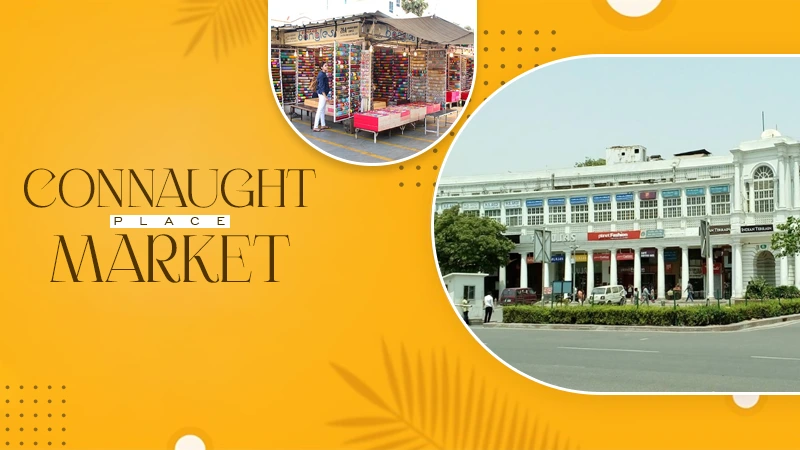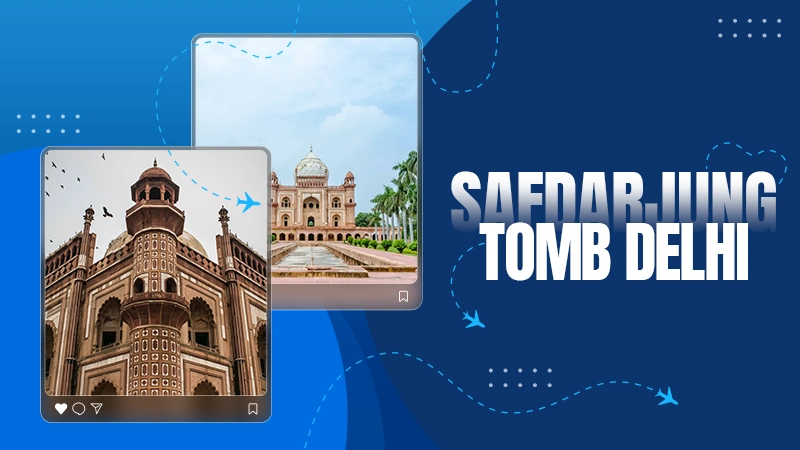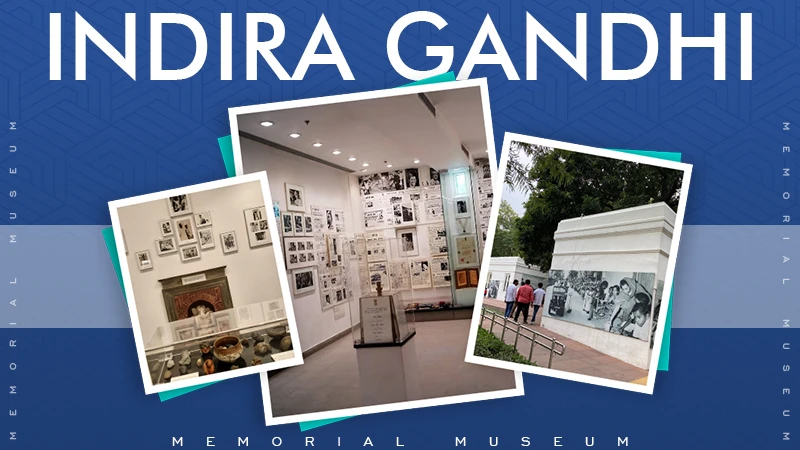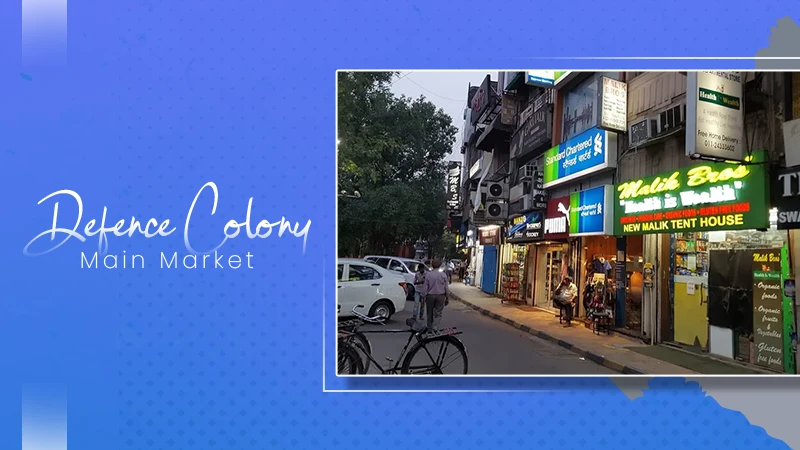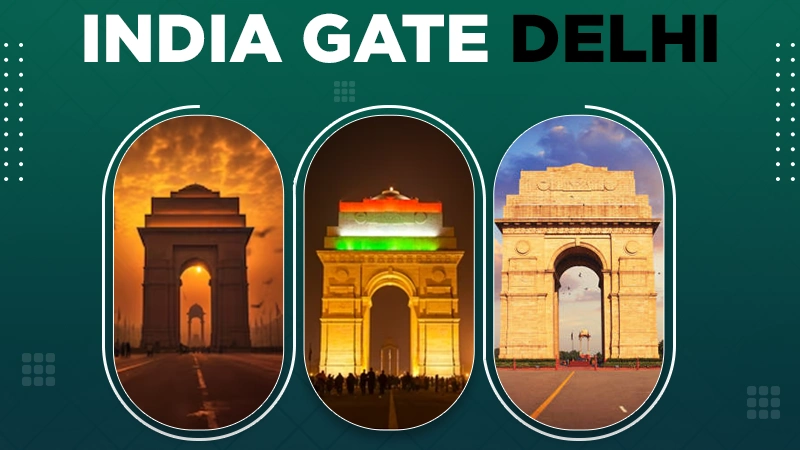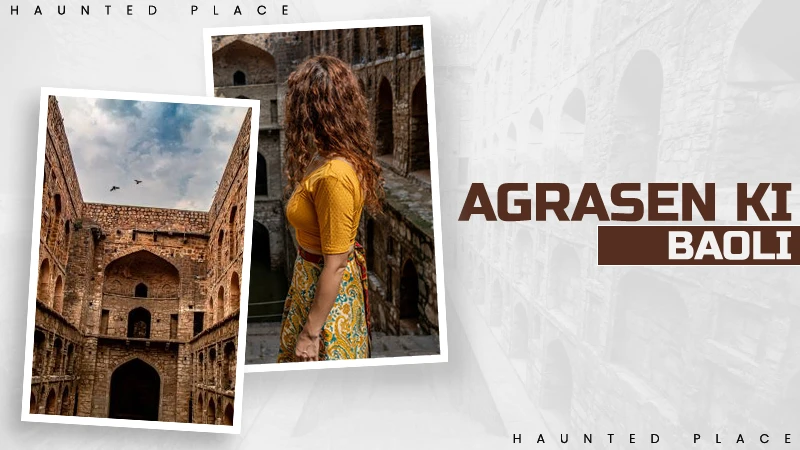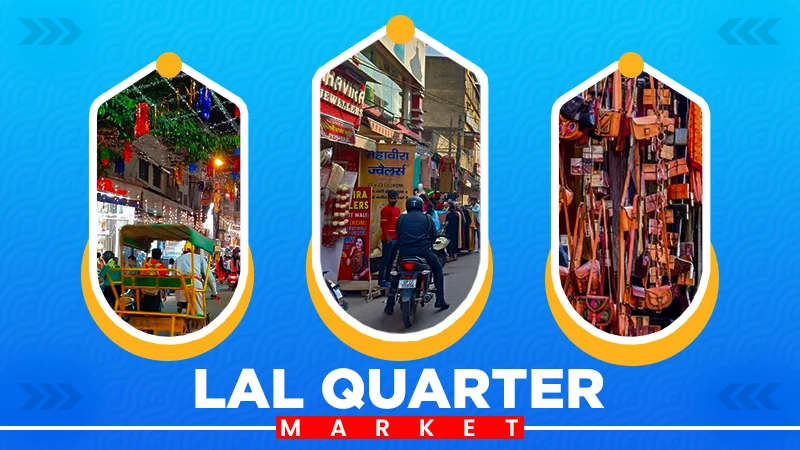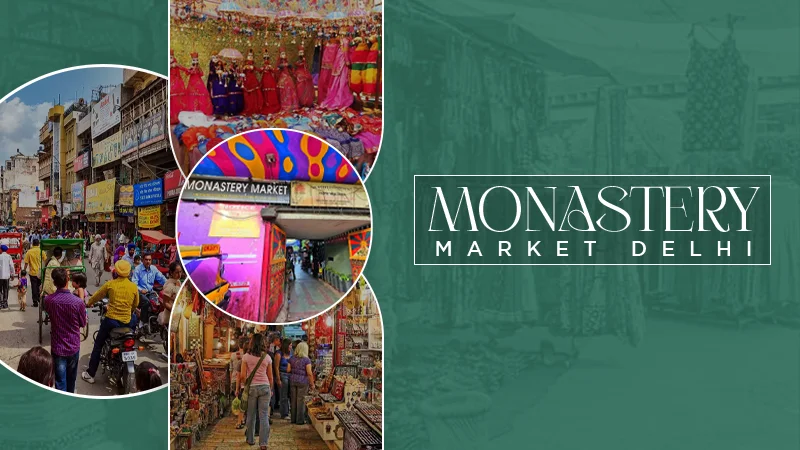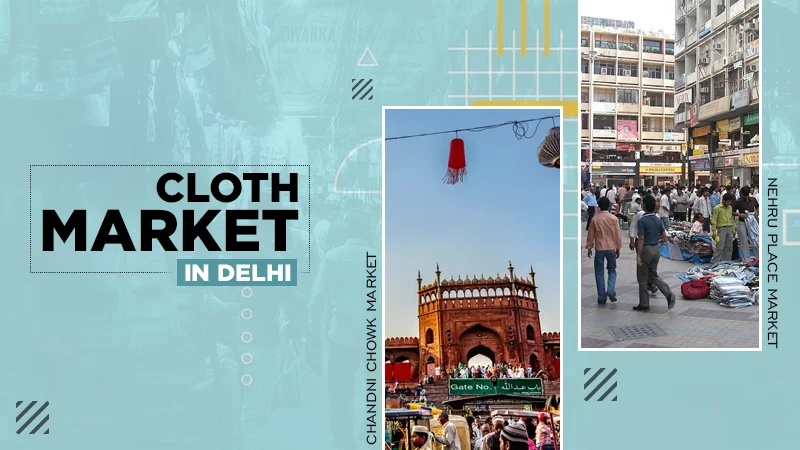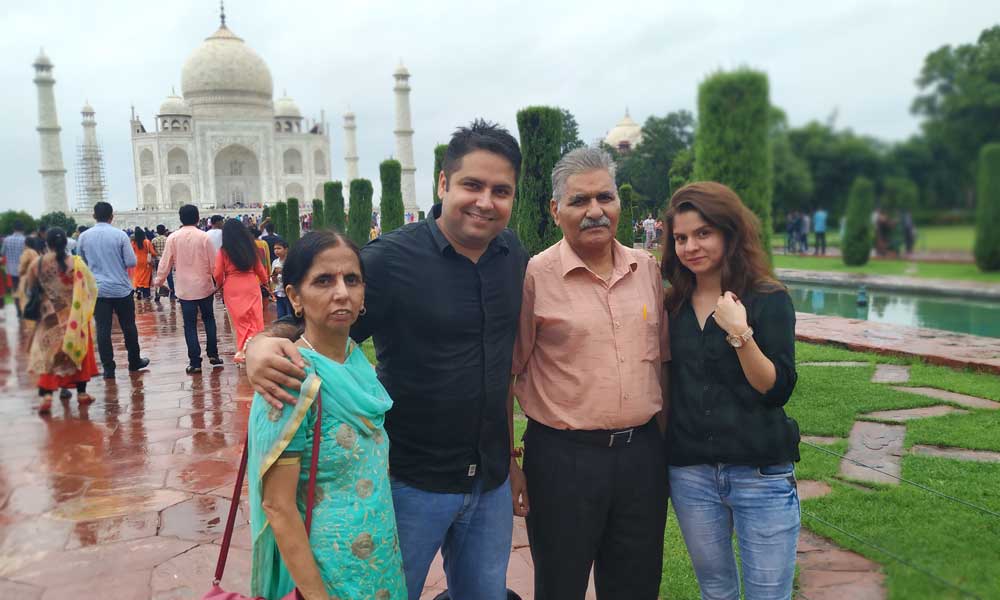
Building a monument for the remembrance of your love; the Idea seems very unrealistic but the Mughal Emperor Shah Jahan turned this dreamy vision to physical reality. Taj Mahal is the symbol of the never-dying love between Shah Jahan and his beloved wife Mumtaz Mahal.
Significance of Taj Mahal:
Taj Mahal is the main attraction for tourists coming to India, due to its registration in the list of Seven Wonders of the World. Calling it a “Wonder” wouldn’t be an exaggeration, as the beauty of this place is indescribable. The term “Taj Mahal” means “the crown of the palace” in Persian, and lately Taj Mahal has now become the most visited Indian site.
Shah Jahan made it to house the tomb of the love of his life; his third wife Mumtaz Mahal. She is said to be the most beautiful-dutiful wife who died while giving birth to their 14th child.
Location of Taj Mahal:
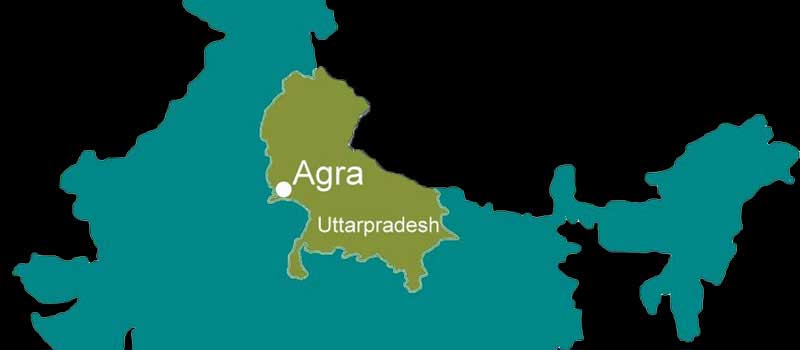
This magnificent mausoleum, Taj Mahal, is placed in the Northern city of India; Agra. This city is the most populated city of the state Uttar Pradesh. Furthermore, the town is accessible by road and railway. The beauty of this place doubles as the river Yamuna is flowing across it.
Taj Mahal’s History and Background:
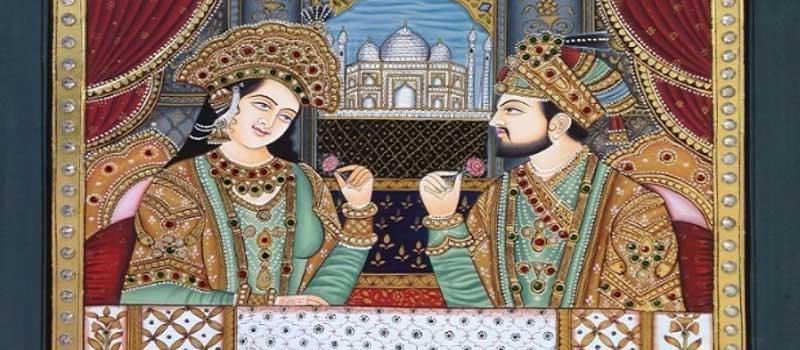
Taj mahal not only has artistic value but has an emotional background too. A passion of a lover (husband) for his beloved can be sensed in this Mahal. Though Shah Jahan had two wives other than Mumtaj, he made this memorable mausoleum for her only.
Mughals ruled India for a long time; almost two centuries i.e. early 16th to 18th century. Shah Jahan, the grandson of Akbar, is considered as the most powerful Mughal emperor who fell in love with Mumtaj, the niece of the Mughal queen Mehrunisaa.
Talking about Mumtaj Mahal, we can say her divine beauty was potent enough to fall many men in her love and Shah Jahan was one of those men and later he succeeded to win the love of Mumtaj. The Queen was a host of outer as well as inner beauty, her pure soul was the reason why she was the favorite of her husband out of all three wives. It is said that she used to make a list of all Widows and Orphans of the principality and give them free food and money for life. The duo had 14 children together, but only 7 survived past infancy.
There is one more interesting fact about the death of Mumtaj Mahal, and this will make you fall for this immortal love story even more. In 1631, when Shah Jahan was on his way to crush the usurper, Mumtaj was accompanying him even when she was at her last month of pregnancy. During their stay in the tent, she gave birth to a healthy girl child but she herself couldn’t be survived and left this world in the arms of Shah Jahan. Agra was the place where the remains of Mumtaj was dugged up. The land was donated by a kind Hindu emperor Raja Jai Singh, and this is the place where the Taj Mahal was built.
The incidence of Mumtaj’s death brought Shah Jahan into the state of grief and mourning and that was when he decided to build the Taj Mahal for his beloved wife so that the entire world can witness the depth of their love in the form of this exquisite, elaborate and expensive mausoleum.
Construction of the Taj Mahal:
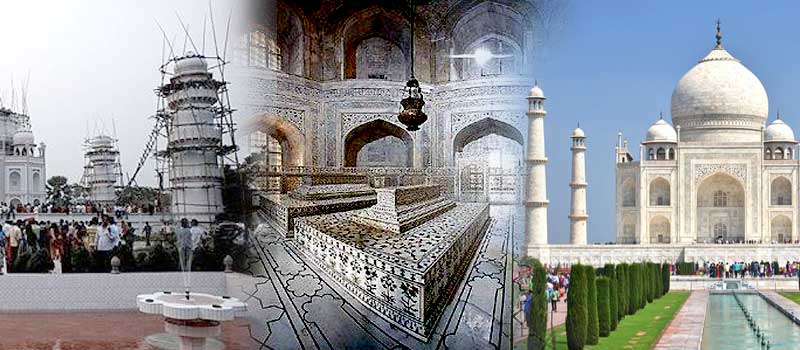
The Taj Mahal premises covers the total area of 17 hectares on the right bank of river Yamuna. This monument took 20 years for its completion, and the taken-time and dedication are visible in the architecture of Taj Mahal. The walls of the Taj Mahal are designed with several historical and Quarannic engravings in Arabic scripts. The inscriptions consist of the true essence of the place and thus, it is not just a mausoleum to visit but a place to feel and understand.
The hard work of, stone-cutters, masons, carvers, inlayers, painters, calligraphers, dome builders, and other artisans is evident in every inch of this white sepulcher. The main architect of Taj Mahal was Ustad-Ahmad Lahori, who is the mastermind behind this astonishing art.
The outer designing of Taj Mahal includes elaborate decorations of opals, lapis lazuli, and jade on a white background, with an accurate balance of concave and convex of the light. The stucco, paintings, and calligraphy on the exterior of the monument provide a stunning flash of colors in the black marble.
The important names that played the main role in the construction of Taj Mahal:
- Ustad Ahmad Lahori: Main architect
- Ustad Isa and Isa Muhammad Effendi, from Persia: Architectural Designer
- Ismail Afandi, Ottoman Empire: Designer of the Main Dome
- ‘Puru’ from Benarus, Persia: Supervisor Architect
- Chiranjilal, Delhi: Chief Sculptor and Mosaicist
- Qazim Khan, Lahore: Gilding
- Muhammad Hanif: Mason Supervisor
- Amanat Khan of Shiraz, Iran: Chief Calligrapher
- Mir Abdul Karim Khan and Mukkarimat of Shiraz: Financial Manager, Daily Production
All-Inclusive Tips to Visit Taj Mahal:
Timings to visit Taj Mahal and Entry Fees:
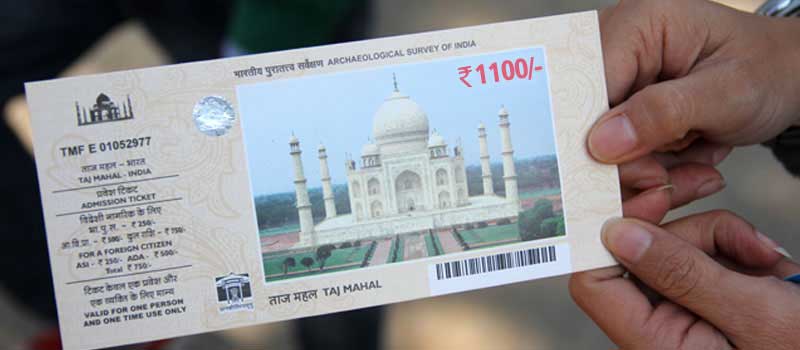
Visiting timing: Day time: Sunrise to Sunset i.e. 6.00 am to 6.30 pm every day except Friday.
Nighttime: 8.30 pm to 12.30 am
Taj Mahal remains closed on Friday and can only be accessed by Muslins in the afternoon to perform prayers.
Viewing monument in the night is only allowed for 5 days a month: on the full moonlight and 2 days and 2 days after full moonlight and during the month of Ramadan.
The tickets to see Taj Mahal can be purchased before 24 hours of the visit from the booking center of the Archeological Survey of India. (Address: Taj Mahal Agra circle, 22 the mall, Agra)
Only 400 visitors can enter in one night, but there is no such restriction in the day time. Also, during the night time, the maximum visiting duration is 30 minutes.
Entry fees:
- For Foreigners: Rs. 1100
- For Indians: Rs. 50
- For Citizens of SAARC or BIMSTEC countries: Rs. 540
- Children below 15: free
You need to pay an extra 200 INR to visit the main mausoleum. Additionally, you can book your ticket online and avail a discount of Rs. 5 and Rs. 50 for Indian and foreign nationals respectively.
The foreigners get free water bottle, shoe-cover, Tourist Guide map of Agra and Golf cart service.
Security Measures at Taj Mahal:
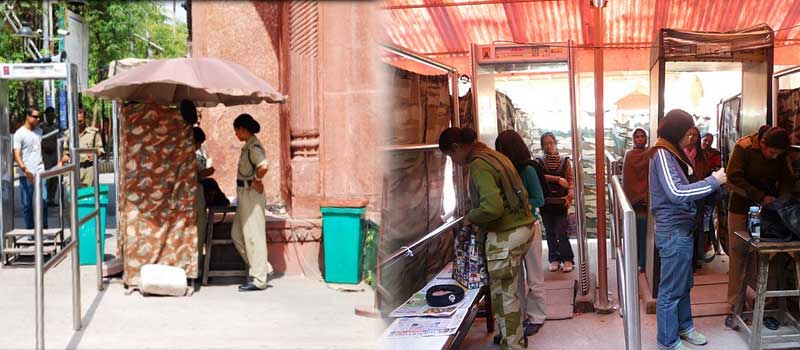
You have to go through a strict security check at each gate of Taj Mahal. Several items such as food, electronic gadgets expect camera, liquor, knives, chargers, tobacco, lighters, smoking items, headphones Tripods, etc. are not allowed in the premises. You may have to pay a few extra charges for some of the items to take along. So, better not to carry prohibited things to avoid the extra charges and inconvenience. Also, you need to keep your mobile switched off or on airplane/silent mode
Best Time to Visit Taj Mahal:
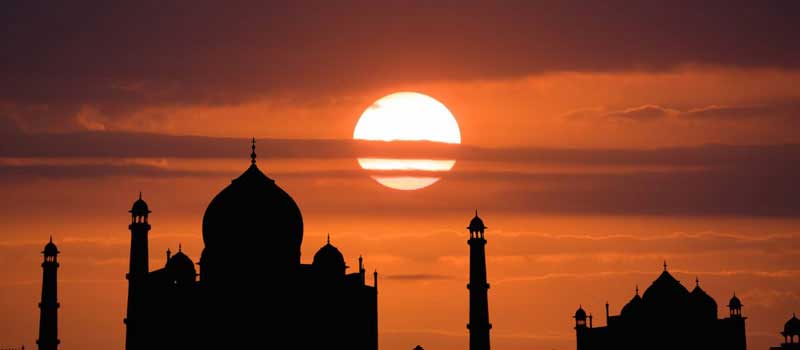
The best time to visit Taj Mahal is sunrise and sunset when you can witness the true beauty of the building. Next, the sunrise is the apt time to see the building booming like a beautiful flower. So, either make a plan in the early morning or during the night, to avoid the heat and crowd. But the day time is preferable if you are visiting during the winters.
Best Season to visit Taj Mahal:
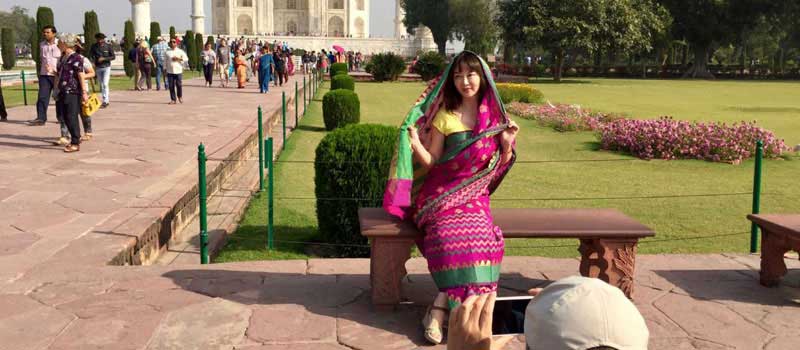
Agra, being under the influence of semi-arid and subtropical climate remains dry and hot most of the time. In summer, especially during April to June, the temperature shoots up to 40 degree Celsius and hence the chances of dehydration and heatstroke become high due to severe heat. So, if you are sensitive to high heat, avoid summer.
In Monsoon i.e. July to September, due to heavy rains, traffic issues, and road condition, the conditions become worse hence this season should be avoided.
The best season to visit Agra (Taj Mahal ) is the winter season. From October to March, the weather becomes perfect for exploration. The clear weather, smooth traffic, and cool breeze guarantee your pleasing travel experience to Agra.
How to Reach Taj Mahal:
Agra is situated 200 km away from Delhi. The city is connected to National highways and can be easily reached by air, road, and train. For reaching there, follow the guide given here:
By Train:
The network connectivity of rails of Agra from different corners of India is quite impeccable. If you are reaching India from abroad, you can commute to Delhi to Agra by Shatabdi Express. However, there are many other superfast and local trains available for Agra from cities like Mumbai, Rajasthan, Madhya Pradesh, and Varanasi.
By Air:
The city Agra has its own airport namely Agra’s Kheria airport which is situated in the military base. This is the fastest way to reach Agra as it only takes half an hour to reach Delhi to Agra. Moreover, Indian airlines provide a daily flight facility to Agra.
By road:
Buses to Agra are widely available from every state of the country. The major bus stand of Agra is Idgah which has a number of buses running from all major cities.
Some Interesting Facts:
- Taj Mahal is a collective work of 22000 labors, embroidery artists, painters, stonecutters, and architects.
- Emperor Shah Jahan was intended to make a clone of Taj Mahal, but with black marble. This idea never turned to reality, due to the interference of his sons.
- The mausoleum changes its hues at different times of the day. It is said that the mood changes of Mumtaj are represented by these changing hues. The color changes from pink in the morning, milky white in the evening and golden at night.
- The peak of the mausoleum is the major highlight. Some people call it the “onion tomb”, at it seems like touching the sky with a height of 35 meters (115 feet).
- There is more than 1 million tourists visiting Taj Mahal every year and thus knowing as tourist magnet of India.
- The most shocking rumor is; Shah Jahan ordered to chop off the hands of all workers so that no one can ever recreate something like this.
- The 1000 elephants were used to transport material for the construction of Taj Mahal.
- The British army took off the most precious stones from the walls of the Taj Mahal.
- The marble is turning yellow from white and hence it is washed with Multani mitti and honey on a daily basis.
- The other wives of Shah Jahan and one of his favorite servants were buried just outside the Taj Mahal.

